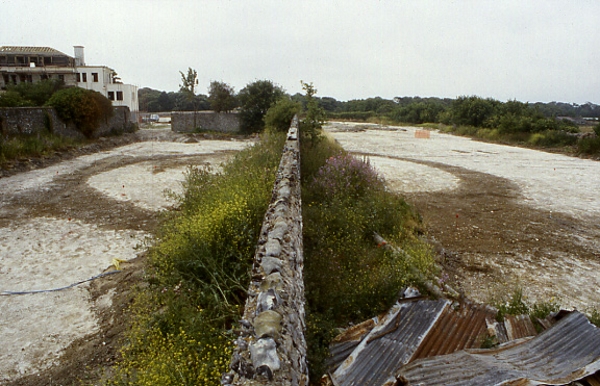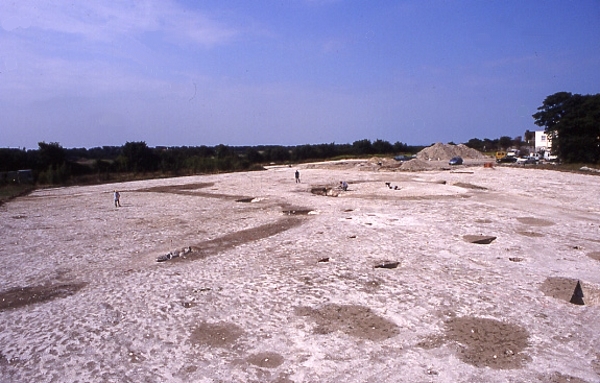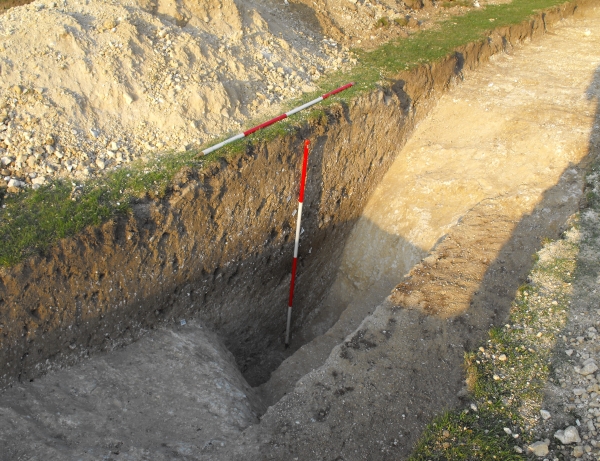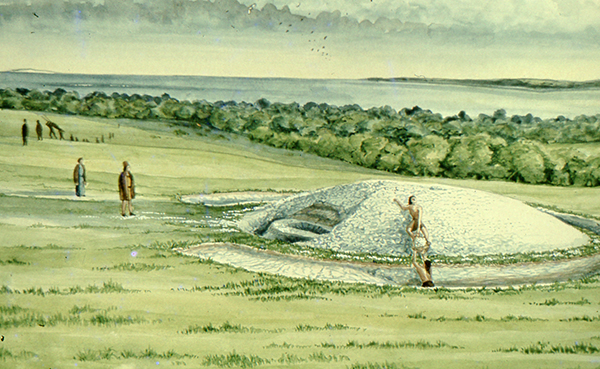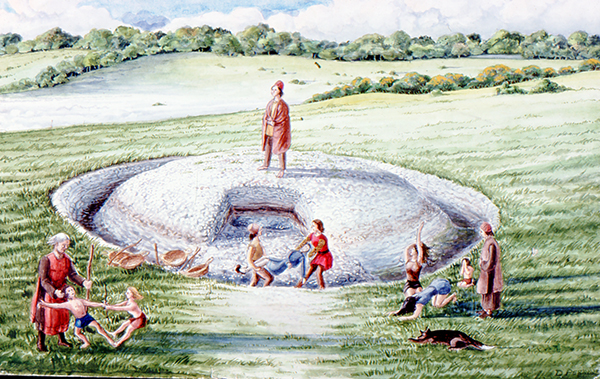 For Day 286 of the VM_365 project we have an image that shows another of the ring ditches of a Bronze Age barrow, excavated at St Stephen’s college, North Foreland in 1999. The ring ditch was shown in an overview of the site which was the image featured on Day 284 of the VM_365 project.
For Day 286 of the VM_365 project we have an image that shows another of the ring ditches of a Bronze Age barrow, excavated at St Stephen’s college, North Foreland in 1999. The ring ditch was shown in an overview of the site which was the image featured on Day 284 of the VM_365 project.
The picture on the left shows the barrow ditch under excavation, with a series of segments being excavated from the fill to show the layers of deposits in profile. The picture on the right shows the profile of one of the excavated segments showing the sequence of multiple fills and interfaces in section, revealing that the circuit that was seen in the ground was in fact formed of two superimposed ditches cut at different times. The earlier ditch circuit had been at least partly filled in and had been refurbished by digging a new circuit around the same footprint.
The original ring ditch, measuring 18m in diameter, was probably cut in the late Neolithic/Early Bronze period, contemporary with a burial that was located at the centre. The earlier ditch cut was slightly irregular, having been formed of a series of straight segments in a similar manner to the ring ditch shown on Day 285. The profile measured approximately 1.5m wide and varied between 0.6 and 0.7m deep. The earlier ditch had been cut with a flat base, with steeply sloping sides angled at approximately 60°, part of this flat based profile can be seen in the right hand side of the picture of the section on the right.
The surviving fills of the primary cut which had not been removed by later activity consisting of thin laminated bands of loam and chalk fragments, often with a fine graded appearance suggesting the erosion of the chalk barrow mound and edges of the ditch. It is likely that the earlier ditch had filled entirely before it was recut along the same circuit, probably in the late Bronze Age. This time the ditch cut had a steep V shaped profile, which cut away one side of the old circuit and penetrated the chalk below the flat floor as well.
The intersection of the two different cuttings can be seen most easily in the right hand image, by following the chalk in the cut from left to right. The steep side of the original ditch breaks to the platform of the original base, which then breaks sharply at a steep angle to the V shaped notch cut by the new circuit. The right hand side of the notch rises at the same angle along the inner edge of the new ditch cutting.
The later refurbishment of the barrow by cutting a broader ring ditch with a V shaped profile through the filled earlier ditch suggests the original barrow may only have existed as a raised earthwork rather than a ditch, although it may have been an impressive feature even after years of weathering.
Why was the ditch circuit recut on the same plan?
Two grave cuts were identified within the Barrow platform. Because of its regular placement in relation to the circumference of the ditch, the central burial is likely to be associated with the original construction of the Barrow. It is possible that the other burial, which lay in a smaller oval cut, may be associated with the refurbishment.
The newly cut ditch probably also remained a prominent landscape feature for centuries, its ditches still visible as deep hollows around the circuit. The post for VM_365 Day 271 featured a bronze age barrow ditch that must have still been a substantial earthwork in the Roman period when large amounts of pottery were tipped in to its upper fills.
In the upper fills of the recut ring ditch at North Foreland pottery in transitional Late Bronze Age/Early Iron Age fabrics was found in relatively large quantities, along with small amounts of 6th century BC pottery contemporary with the earliest occupation features of the Iron Age, suggesting that the final filling of the re cut barrow occurred early in the Iron Age when the hill top was being turned into a nucleated settlement, with enclosures and clusters of post built structures, served by a major trackway leading from the sea.
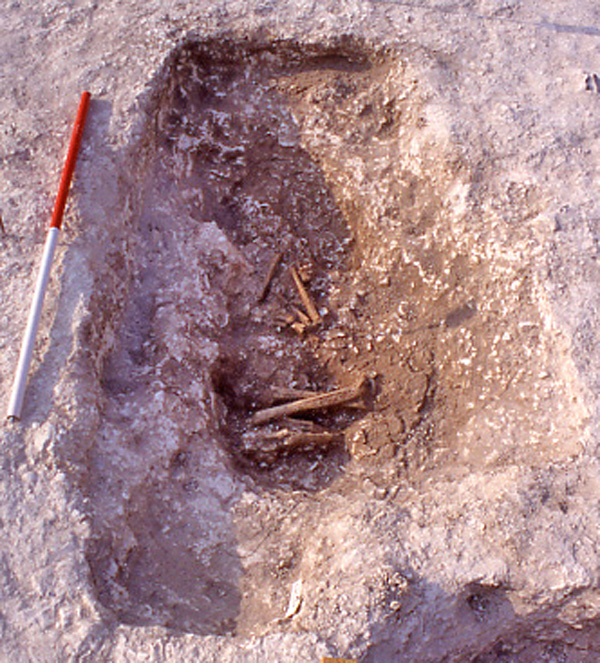
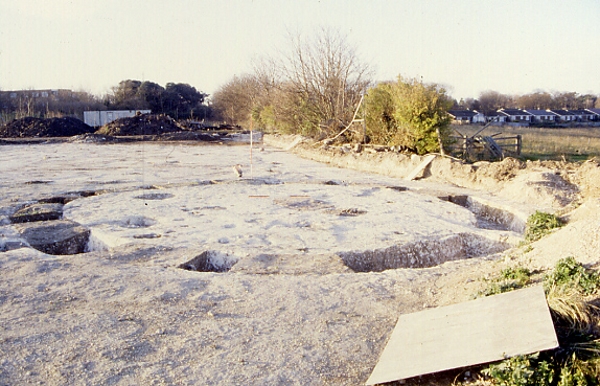 For the image on Day 289 we have a picture of the ring ditch of a small round barrow, located at the western edge of the St. Stephens College excavation site at North Foreland, Broadstairs. The barrow stands on the crest of the chalk ridge with the land falling away to the north and north west.
For the image on Day 289 we have a picture of the ring ditch of a small round barrow, located at the western edge of the St. Stephens College excavation site at North Foreland, Broadstairs. The barrow stands on the crest of the chalk ridge with the land falling away to the north and north west.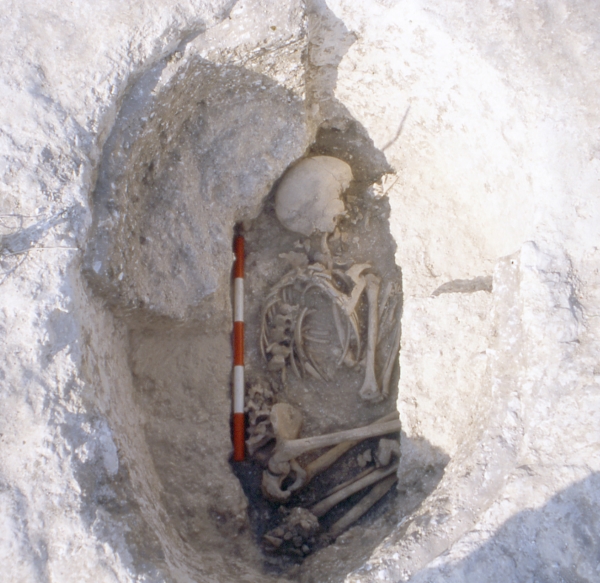
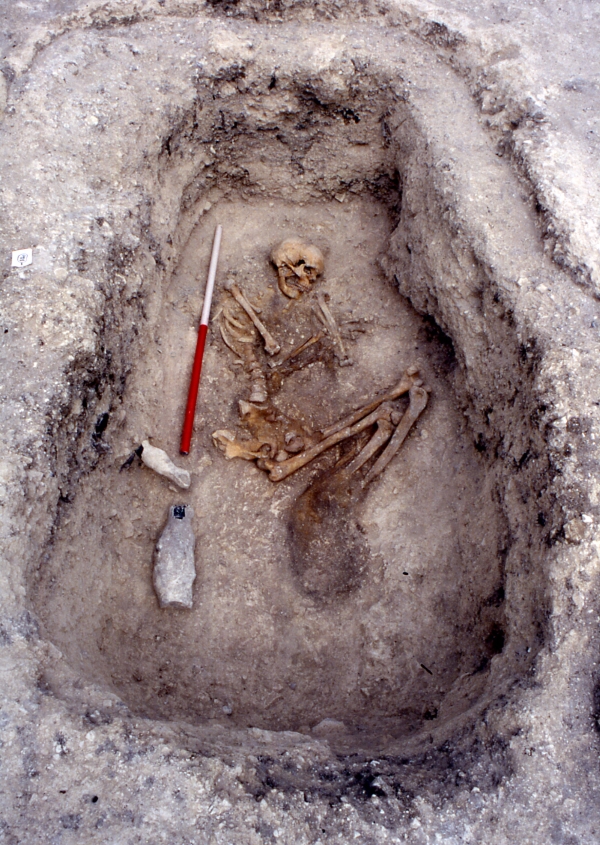
 For Day 286 of the VM_365 project we have an image that shows another of the ring ditches of a Bronze Age barrow, excavated at St Stephen’s college, North Foreland in 1999. The ring ditch was shown in an overview of the site which was the image featured on
For Day 286 of the VM_365 project we have an image that shows another of the ring ditches of a Bronze Age barrow, excavated at St Stephen’s college, North Foreland in 1999. The ring ditch was shown in an overview of the site which was the image featured on